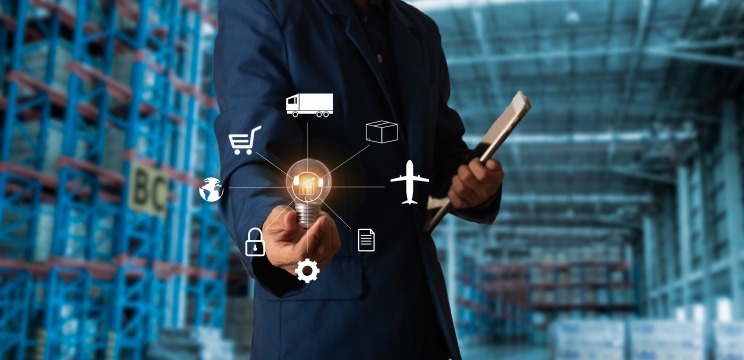Renewable energies in Morocco
In 2016 Morocco inaugurated Noor, the largest solar energy farm in the world. This highly mediatized event perfectly symbolizes the ambitions of Morocco in the area of renewable energies. Since 2009, the country has been engaged on an ambitious strategy which is steadily establishing it as a green economy champion. In the wake of this dynamics, a whole high-value sector is developing with numerous business opportunities being offered.
For a start let us have a look at the definition of renewable energy. Abbreviated as R/En, energy is renewable when it comes from sources in nature that are renewed on an on-going basis, compared with non-renewable energy, such as oil or natural gas, whose stocks are exhaustible. Such sources include sun, wind, heat (generated by the earth) or (sea-generated) tidal energy. In all of these areas, Morocco holds an exceptional potential standing ready to be harvested. In this connection, Morocco is ranked 9th worldwide, as far as the sunning rate is concerned.
A Strategic Stake and Moral Commitment
Morocco’s determination to develop this area responds to a strategic stake. In fact, the Kingdom does not have oil or natural gas reserves and, in fact, imports 95% of the energy that it consumes. To curb its dependency on fossil energy imports, which claim swingeing amounts of money paid in foreign currency, the country has decided to rely on its considerable renewable energy deposits, such as solar or wind energy. The second challenge to be met has to do with climate warming. In this area, Morocco is particularly vulnerable to global temperature surges. This explains why Morocco has responsibly committed itself by ratifying the Paris Agreement following the COP21. The ensuing year, in 2016, the Kingdom gathered as many as 200 countries in Marrakech, in the framework of COP 22, thereby demonstrating its involvement and determination to combat (global) climate warming.
By developing the R/En sector, Morocco is really building its capacities in order to have access to energy that is guaranteed, competitive, and environment friendly. The objective set is quite ambitious, too: to increase the renewable energy proportion in the country’s power mix by taking it to 52% by 2030. This proportion has already augmented in a spectacular way, by rising from less than 2% in 2008 to as much as 38% in 2018. According to the 2019 Climate Change performance index Morocco ranks 5th worldwide in terms of performance in this area.
Structuring Projects all over the Territory
For several years, large-scale programs have been deployed all over the Kingdom with a total capacity of 3,685 MW of electrical power, broken down as follows: 700 MW of solar energy; 1,215 MW of wind energy and 1770 MW of hydro-electric power, according to Masen (the Moroccan Agency for Renewable Energies). Over the past 10 years, as much as 130 billion Dirhams has been invested in green energies.
The country has fifteen operating projects, including the Pharaonic Noor Ouarzazate solar project (580 MW); the Tarfaya and Aftissat wind energy farms, with a capacity of 301 MW and 200 MW, respectively, as well as Akhfennir 1 & 2, (200 MW).
Other major projects are underway. This is the case of Noor Midelt I (800 MW) and Noor Midelt II (800 MW) in the solar area and the 850 MW PEI (or, Integrated Wind Energy Plan). A hydro-electric program provides for the realization of the 100 MW El-Menzel Complex, along with a STEP (Pumping Powered Energy Transfer Plant), called Abdelmoumen, with a 350 MW power capacity.
With all of these major projects, the energy transition is being made in great leaps, and the objectives that have been set might well be exceeded, indeed.
With the progress achieved on this promising path, the Kingdom does not intend to stop. Indeed new clean energy sources, such as biomass, continue to command the attention of the country, at the highest levels. Thus, according to Institut fur angewandtes Stoffsmmanagement (IfaS), a German university entity specialized in sustainable development, the potential held by Morocco in this area should reach some 17 million MWh/year by 2030. The same Institute reckons that the development of biomass might generate as many as 10,000 jobs and reduce greenhouse effect emissions by 8.5 million tons per year.
Steady Establishment of an R/En Ecosystem
The vitality of the R/En sector directly impacts the economy of the Kingdom and its attractiveness. For instance, by investing 100 million Euros in a plant that manufactures “100% Made-in-Morocco” wind energy generating blades, Siemens Gamesa have created upwards of 600 direct jobs and 500 indirect ones.
The success of this enterprise, which benefits from the strategic position of Morocco and its proximity to targeted markets, underscores the potentialities offered by green business in terms of business possibilities. To help Moroccan companies to benefit from its impacts, the solar cluster strives to develop a competitive solar energy industry. This innovation platform fosters synergies between public and private actors by mobilizing professional organizations, industrialists, researchers, and the academic world.
Innovation is, of course, a decisive criterion in the development of the R/En sector. Morocco, which looks forward to emerging as a model in this area, is steering R&D is such a way as to make it respond to concrete requirements and to make it operational without delay. This is why Masen proposes a platform in Ouarzazate where engineers can test their technical solutions, in the form of full-scale prototypes, the aim being to foster industrial integration.
Training and Research as Levers of Competitiveness
The dynamism of the R/En sector requires recourse to new competencies. Located just near the Mohamed VI Polytechnic University, the Green Energy Park, which was inaugurated in 2017, offers a platform especially dedicated to research and training in renewable energies. The platform was built by IRESEN (the Solar Energy and New Energies Research Institute) in collaboration with OCP Group. It is the first chain-link in a would-be renewable energy research network.
The city of Benguerir has now positioned itself as a city of knowledge, whose distinction has started to radiate beyond the country’s borders. Among the new research and innovation platforms, mention could be made of the Green Energy Park MCI, which is devoted to renewable energy technologies in the agricultural sector. It is scheduled to be established in Yamoussoukro in the Houphouet-Boigny National Polytechnic Institute, in partnership with the Mohamed VI Polytechnic University.
A Regional Energy Hub
Beyond its own borders, the Kingdom intends to establish itself as a genuine hub in the sector on the continent level. Morocco has also joined the African Coalition for Sustainable Energy Access (ACSEA), which was launched in 2019, on the occasion of the UN Climate Summit, for the purpose of speeding up access to sustainable energy on the continent. Besides, an interconnection project with sub-Saharan countries is now being considered.
The country is poised to play a central role in the global energy transition. The “SET Roadmap,” Agreement, launched during the COP22, aims to facilitate cross-border renewable power trade between producers and private consumers –namely, between Morocco, Spain, France, Portugal, and Germany. The five countries have signed a common agreement on R/En trade in Brussels. The Kingdom is thus enhancing its Euro-Mediterranean integration.
Morocco is about to become a world reference in energy transition. In fact, its ambition to develop an R/En sector on the African continent holds out the prospect of wealth-creating dynamics. National companies must therefore take advantage of these exceptional conditions so as to imagine new growth relays.



